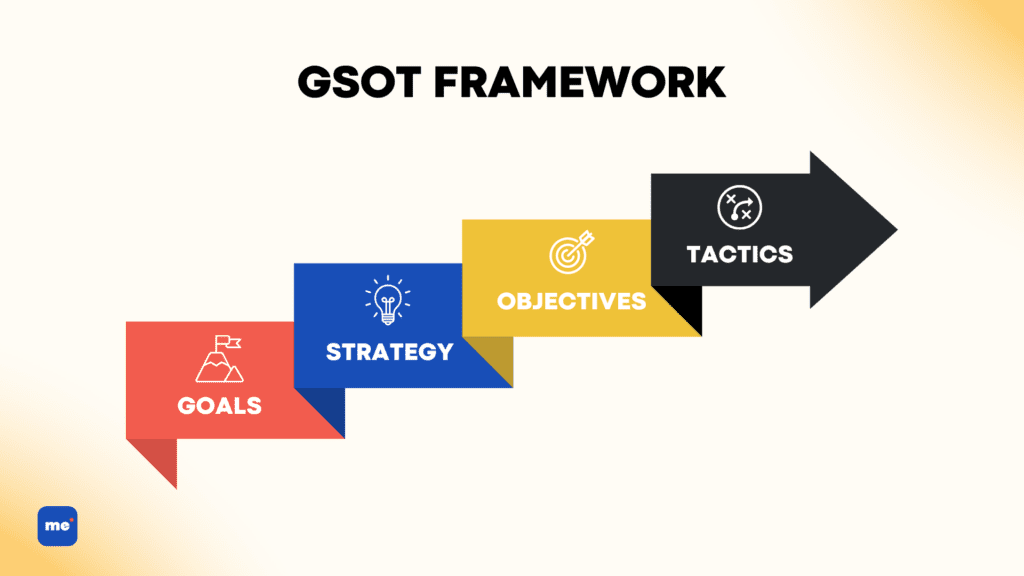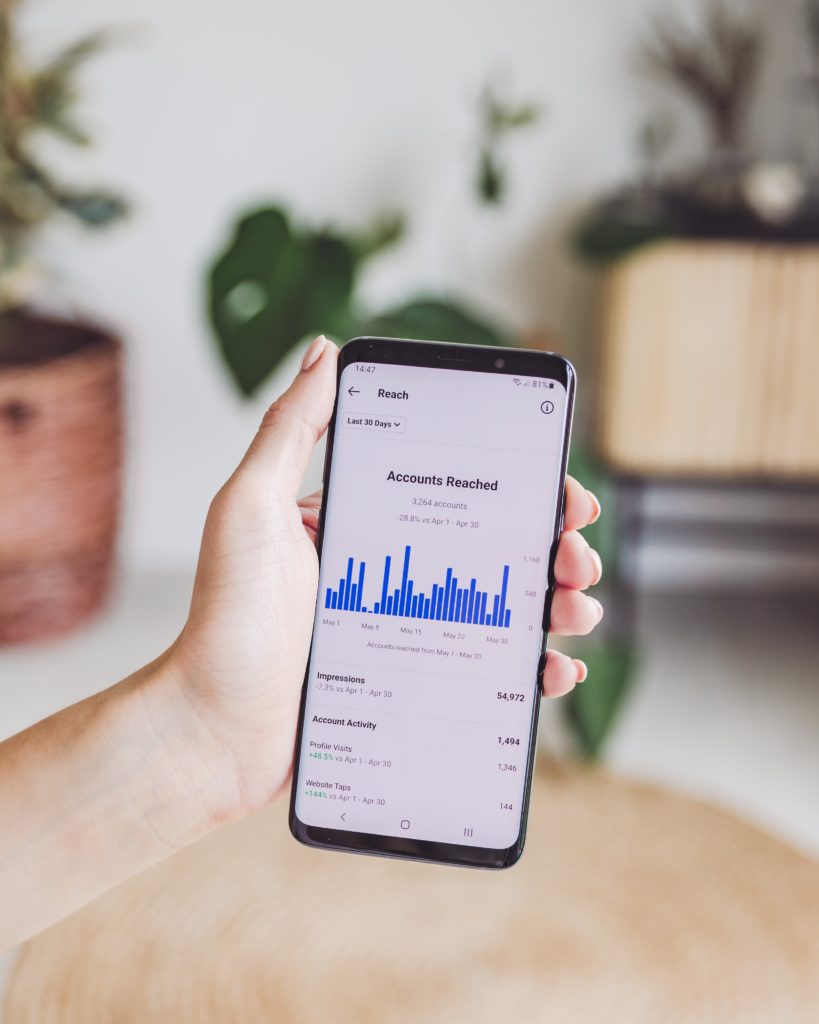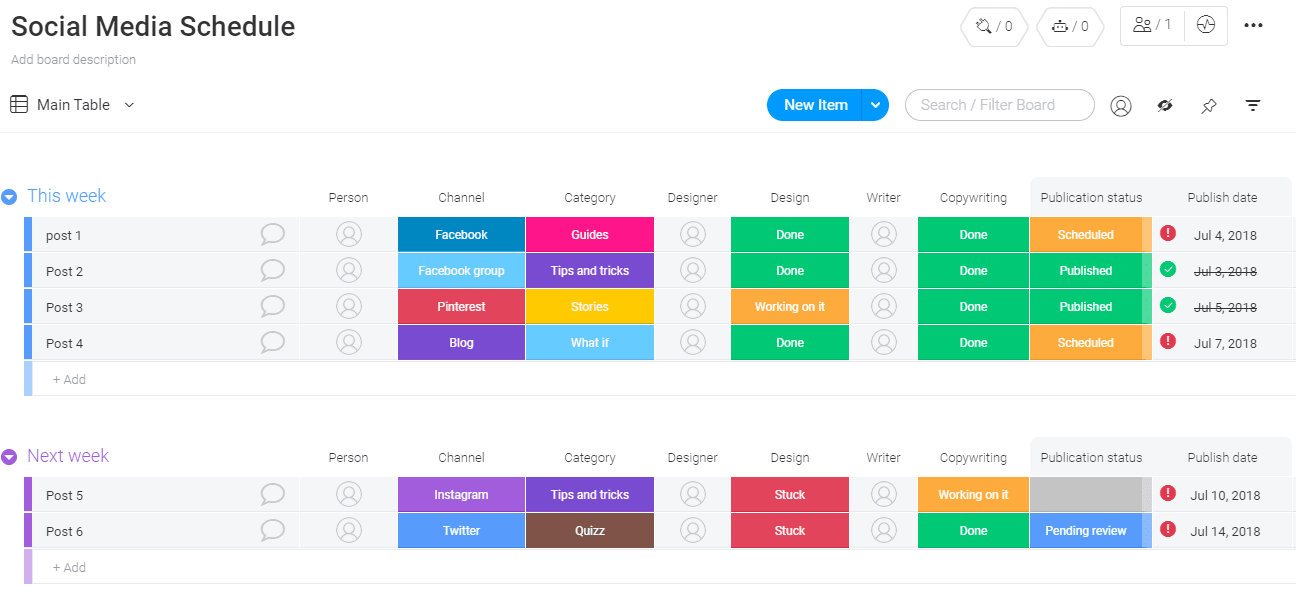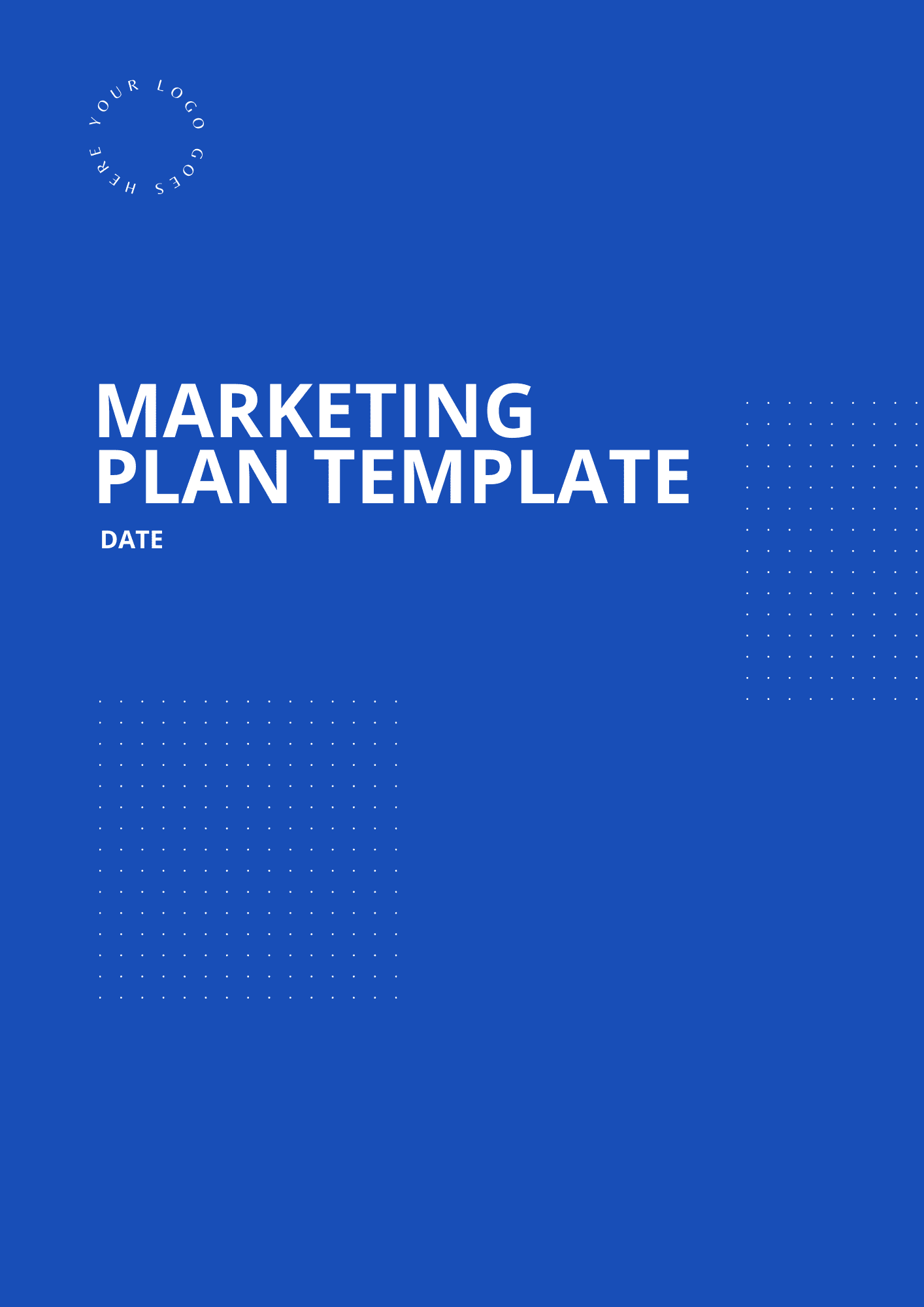Fill your inbox with exciting insights biweekly.
The 9 Essential Ds to Designing a Dynamic
Digital Marketing Strategy
Updated: August 25, 2022

Andie Phoon
It’s not global breaking news that Digital Marketing is a necessity for all businesses. People are spending most of their time online and many organizations have remodeled their marketing strategies toward digital ones.
The biggest struggle now would be choosing the right kind of strategies for greater return on investment. A well-thought out strategy not only prevents you from wasting time, effort, and costs, but also helps you build on what is already working.
We’ve put together this guide to help you achieve your goals of improving your digital presence.
Table of Contents
1. Discover your market, landscape, and competition, then analyze your results
To ensure that your strategy is solid, you’ll need to start by analyzing your past marketing performance and presence. Like Sir Winston Churchill once said, “However beautiful the strategy, you should occasionally look at the results.” So, begin by evaluating how you did last year. How did your strategy fare?
Here are some prompts to get you started:
- What are your analytics like?
- Did your website traffic increase or decrease?
- What worked and what didn’t?
- Why didn’t certain tactics work and why?
"However beautiful the strategy, you should occasionally look at the results."
- Winston Churchill
After you’ve determined what can be improved, you can move toward examining your current environment. Do you understand what your clients need? What are their current pain points? Do you know what your strengths, weaknesses, opportunities, and threats are?
A couple of good questions to ask yourself:
- What’s my product’s/solution’s/service’s USP (unique selling proposition)?
- Who’s my competition? What will make my potential clients choose them?
- What’s my S.W.O.T analysis like?
- Who are my customers? What’s their behavior and interests like?
If you’re looking for ways to better understand your customers, utilize great tools like Google Analytics, Google Trends, and Facebook Audience Insights to uncover the details about your audience’s likes, dislikes, demographic, interests, behaviors, and more.
You can also create and use buyer personas to help represent your ideal customer(s).
2. Describe your buyer personas
When I say that it’s entirely essential that you understand who your customers are, I don’t mean it lightly. You need to know who you’re marketing to. Like Rand Fishkin, the founder of SparkToro, once said, “Don’t build links. Build relationships.”
According to the Marketing Sherpa, utilizing buyer personas can increase website traffic by 210%, boost organic search by 55%, and increase CTR by 14%.
That’s why buyer personas are critical to the success of your digital marketing strategy. Smart marketers know that curating the right buyer personas from thorough and accurate data is the key. Ensure that your buyer personas are derived from real data through surveys, research, and interviews. It is always essential that you avoid making assumptions about your audience—that’s a surefire way of making costly mistakes.
If you want to create buyer personas that feel like real, living breathing representations of your customers, your research pool needs to be a nice blend of customers, prospects, and leads—in essence, you’ll need an audience who line up with your target audience.
The kind of data you’ll need are:
- Quantitative and demographic data
- Location, age, income, career, number of children, etc.
- Qualitative and psychographic data
- Goals, challenges, hobbies, interests, behavior, priorities, pain points, etc.
By concluding what kind of data you’ll need, you’ll be able to find the right information you need to form a well-rounded buyer persona.
3. Design your strategy and identify which digital marketing tools you'll need
Now that you’ve determined your market and audience, you can begin building a clear strategy based on your goals.
Side Note: Remember that your goals need to S.M.A.R.T—Specific; Measurable; Attainable; Relevant; Timely.
Once you’ve laid out your goals, leverage the GSOT strategy to help you effectively align your plan. What’s the GSOT strategy? It stands for goals, strategies, objectives, and tactics.

Here’s an example of what your GSOT strategy could look like:
Goals:
- Grow sales by 10%
- Generate 200 new leads from a roadshow event
Strategies:
- Growing awareness
- Increase interest and action for my xyz product
Pro tip: Remember that your strategies are usually defined by the stages of the marketing funnel.
Objectives:
- Because I want to grow sales by 10%, my objective is to establishing 400+ new leads
Pro tip: Objectives are measurable numbers that are directly linked to your goals.
Tactics:
- Since I know I need 400+ new leads to reach my objectives, I’ll need better organic SEO or Google Ads to entice prospects
Pro tip: Tactics always need to align with your objectives.
When you’ve written and mind mapped all these points out, you’ll be able to focus your efforts on areas that are most likely to help you drive growth. With the right digital marketing strategy and execution, you’ll be able to meet your business bottom line with less headaches and more profit.
Since you’ve now been armed with a solid strategy, it’s time to determine what digital marketing tools you’ll need to accomplish your GSOT.

Here are the standard tools you’ll need:
- Social Media
- Email Marketing
- SEO, Keyword Search, SEM
- Conversion, Marketing, and Personalization
- Website
- Lead Capturing
- Graphic Creation
- Video Creation
- Google (Analytics, Ads, Trends, etc.)
- Productivity
If you’re looking for specific tools to help you, stay tuned for our next blog post by subscribing to our newsletter for the latest updates!
4. Determine your KPIs and benchmarks for accurate measurable results
It’s quite common that businesses end up executing their strategy, but end up struggling to figure out whether they’ve really received measurable results. Each marketing tactic, channel, or activity you invest in needs to have a clear KPI and meet it. It’s imperative that you set KPIs and benchmarks to have a measure of success.
For example, maybe you’re looking to improve your website traffic. What would your KPI and benchmark be then? Your KPI could be your website traffic and your benchmark could be reaching a 35% increase in 3 months.
Once you’ve established what your KPIs and benchmarks are, you’ll know what works and what can be improved for the future.
5. Deduce which are your key digital channels and assets
The best way to evaluate all your key digital channels is by separating and categorizing through 3 taxonomies: earned, paid, and owned media. This will help keep you on track without making you feel overwhelmed or confused. It’s also a useful way of looking at things from a macro view.
The bright side of this if handled properly, you could turn a situation into an advantageous brand opportunity.

Owned Media
This is classified by what digital assets your brand or company owns—websites, social media, blog content, videos, imagery, graphics, quizzes, assessment tools, free books, templates, podcasts, webinars, emails, and so on. TL;DR, owned channels are what your business has 100% control over.
The bright side of this if handled properly, you could turn a situation into an advantageous brand opportunity.

Paid Media
Paid media includes channels like Google Ads, paid social posts, native advertising, or any other form where you’ve paid for visibility and coverage.
Earned Media
This form of media represents the exposure you earn through word of mouth. So if you’ve done any guest posting, press releases/mentions, reviews, or customer experience testimonials, they’re considered earned media.
After you’ve separated these forms of media into their respective categories, it’ll make it easier for you to determine what you’d like to keep and what you’d like to axe. This is also a great way to know if you need to ramp up your efforts in blog, social, or video content. Maybe you’ll even need to come up with a content strategy! Which leads to my next point…
6. Develop a strong content strategy
Whoever tells you that content strategy isn’t necessary is lying. We live off the age of content marketing and that’s not going to change for a long time.
So, the pressing question is: has your content been useful? Has it been something that your audience wants and needs? How has it made them feel? Does it help them solve a burning question? Or assist them in figuring out how their problem can be solved? To paraphrase Maya Angelou—people will forget what you said; what you did; but they’ll never forget how you made them feel.
It’s entirely true! People love to share what is useful, relevant, and unique; components that have a direct link to their emotions.
When you’re consistent and provide high-quality content, you’ll resonate better with your audience.
Some prompts to help you while you plan:
- What will be your content format?
- What are your goals for this content strategy? How will you align it with your digital marketing strategy?
- What kind of promotional channels are you going to utilize? Instagram, Facebook, etc.?
- Why are you creating your content?
- How will you prioritize your content?
You can draw out your content strategy on a simple spreadsheet for a more organized mind-mapping. Please note that you should also include your budget and what resources—like time, man hours, etc.—you’ll need to accomplish everything.
7. Draft a content calendar
In my experience, building a comprehensive content calendar has saved me and my team a vat of blood, sweat, and tears. Having a content calendar allows you to have a long-term platform where you can assess your goals with ease. However, there are a couple of steps you’ll need to take in order to ensure that your calendar is fruitful.

Source: Monday
A conducive content calendar includes these fundamental details:
- Person in charge (PIC)
- List of team members
- Publication date
- Keywords
- Topic
- Tags
- Frequency
- Major events
- Deadlines
- Content formats
- Deliverables
- Benchmarks
- KPIs
Once you’ve ironed out the details, take the time to draft up an extensive calendar. You can use tools like Monday, Google Sheets, or Trello.
Remember that keeping track is half the battle! Your content calendar is here to help you, not hinder you.
8. Don't forget to remain agile and adaptable
While it’s important to have a digital marketing strategy, it’s also equally important to remain adaptable. No plan survives first contact with the enemy. Sometimes, we may have mapped out a comprehensive strategy that we’re absolutely sure will work. However, it would be foolhardy to assume that our strategies won’t require any adjustment. In order for your digital marketing strategy to excel, you’ll need to implement some room for flexibility and change.
In our experience, the market world moves at the speed of light. Many unforeseen circumstances will come your way. You need to be prepared for something to rock the boat because life hardly ever goes to plan.
How do you ensure that you can stay flexible and adaptable? You have five options:
- Prepare by being up to date on everything to do with your industry, customers, and competitors
- Accept the changes and work alongside them, instead of avoiding them
- Move quickly and swiftly, if you need to
- Respond appropriately to unexpected circumstances
- Think on your feet and improvise (The Worst Case Scenario™)
Don’t let your digital marketing strategy be held back by inadaptability. Wise marketers will allow themselves and their plan to adapt to change—to ebb and flow like water.
9. Deploy your Digital Marketing strategy
It’s the moment you’ve been waiting for! You’ve done all the hard work—the hours of planning and researching have not gone to waste. You now have a solid strategy and vision as to what you want to do for the year.
To reassess, this is what you’ve done so far:
- Discovered your market, landscape, and competition, then analyzed your results
- Described your buyer personas
- Designed your strategy and identified your digital marketing tools
- Determined your KPIs and benchmarks
- Deduced which were your key digital channels and assets
- Developed a strong content strategy
- Drafted a content calendar
- Didn’t forget to remain agile and adaptable
You’re now ready to bring everything together and deploy your digital marketing strategy. All you have to do now is compile it on a document to share with your team, stakeholders, and shareholders.
To provide you with further guidance, we’ve created a free Digital Marketing template (which you can download below) for you to use, as well as a Digital Readiness Assessment Tool. Use these tools to communicate your plan to your colleagues with clarity and influence.

Need help in growing your marketing strategies for effective improvement?
We’d love to hear from you! If you’d like to share how our template and tool has helped you, feel free to share your thoughts with us at hello@medianetic.me. If you’re looking to up your digital marketing, get in touch with us! We’d love to see how we can add value to your brand or business.
Subscribe now.
Medianetic’s Newsletter is the one stop hub for all things digital marketing, design, social media, and more. Get a fresh batch of insights delivered to your inbox biweekly.

